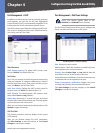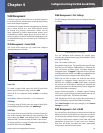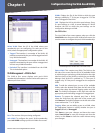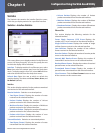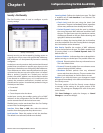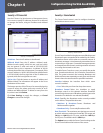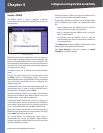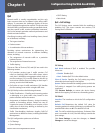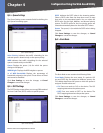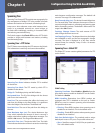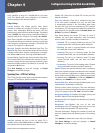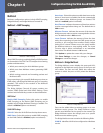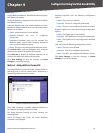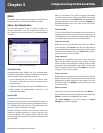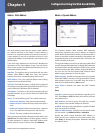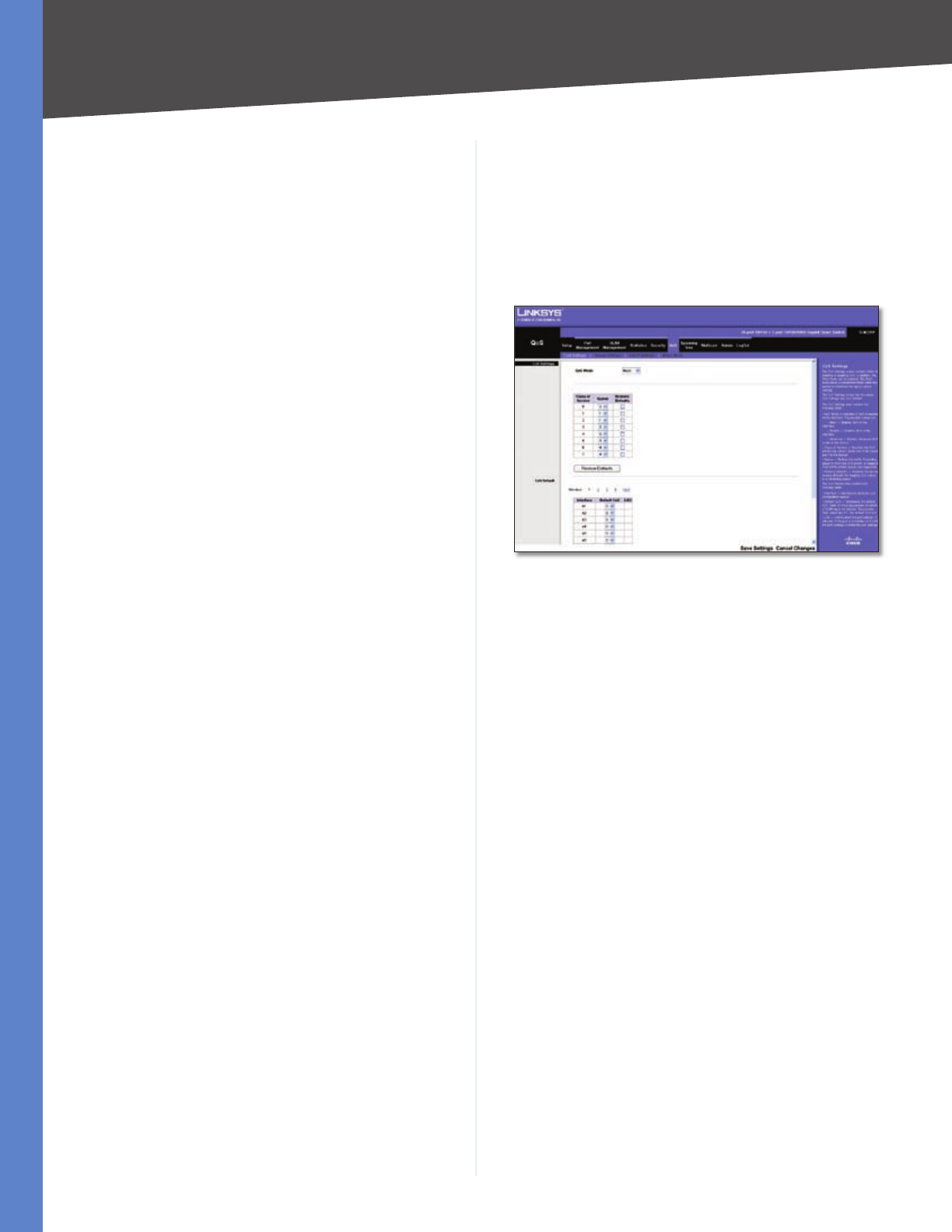
Chapter 4
Configuration Using the Web-based Utility
25
Business Series Smart Gigabit Ethernet Switch
QoS
Network traffic is usually unpredictable, and the only
basic assurance that can be offered is best effort traffic
delivery. To overcome this challenge, Quality of Service
(QoS) is applied throughout the network. This ensures that
network traffic is prioritized according to specified criteria,
and that specific traffic receives preferential treatment.
QoS in the network optimizes network performance and
entails two basic facilities:
Classifying incoming traffic into handling classes, based
on an attribute, including:
The ingress interface
Packet content
A combination of these attributes
Providing various mechanisms for determining the
allocation of network resources to different handling
classes, including:
The assignment of network traffic to a particular
hardware queue
The assignment of internal resources
Traffic shaping
The terms Class of Service (CoS) and QoS are used in the
following context:
CoS provides varying Layer 2 traffic services. CoS
refers to classifying traffic into traffic classes, where
each class is handled as an aggregate whole, with no
per-flow settings. CoS is usually related to the 802.1p
service that classifies flows according to their Layer 2
priority, as set in the VLAN header.
QoS refers to Layer 2 traffic and above. QoS handles
per-flow settings, even within a single traffic class.
The QoS facility involves the following elements:
Traffic Classification—Classifies each incoming packet
as belonging to a given traffic class, based on the
packet contents and/or the context.
Assignment to Hardware Queues—Assigns incoming
packets to forwarding queues. Packets are sent to
a particular queue for handling as a function of the
traffic class to which they belong, as defined by the
classification mechanism.
Traffic Class-Handling Attributes—Applies QoS/CoS
mechanisms to different classes, including Bandwidth
Management.
The QoS configuration options are as follows:
CoS Settings
Queue Settings
•
•
•
•
•
•
•
•
•
•
•
•
•
DSCP Setting
Basic Mode
QoS > CoS Settings
The CoS Settings screen contains fields for enabling or
disabling CoS. This screen contains two sections, CoS
Settings and CoS Default.
QoS > CoS Settings
CoS Settings
QoS Mode Indicates if QoS is enabled. The possible
values are:
Disable Disables QoS.
Basic Enables QoS. This is the default value.
Class of Service Specifies the CoS priority tag values,
where 0 is the lowest and 7 is the highest.
Queue Defines the traffic forwarding queue to which the
CoS priority is mapped. Four traffic priority queues are
supported.
Click Restore Defaults to restore the device factory
defaults for mapping CoS values to a forwarding queue.
CoS Default
Interface The interface to which the CoS configuration
applies.
Default CoS Determines the default CoS value for
incoming packets for which a VLAN tag is not defined. The
possible field values are 0-7. The default CoS is 0.
LAG The LAG to which the port belongs, if relevant. If the
port is a member of a LAG, the LAG settings override the
port settings.
Click Save Settings to save the changes, or Cancel
Changes to cancel the changes.
•
•
•
•



